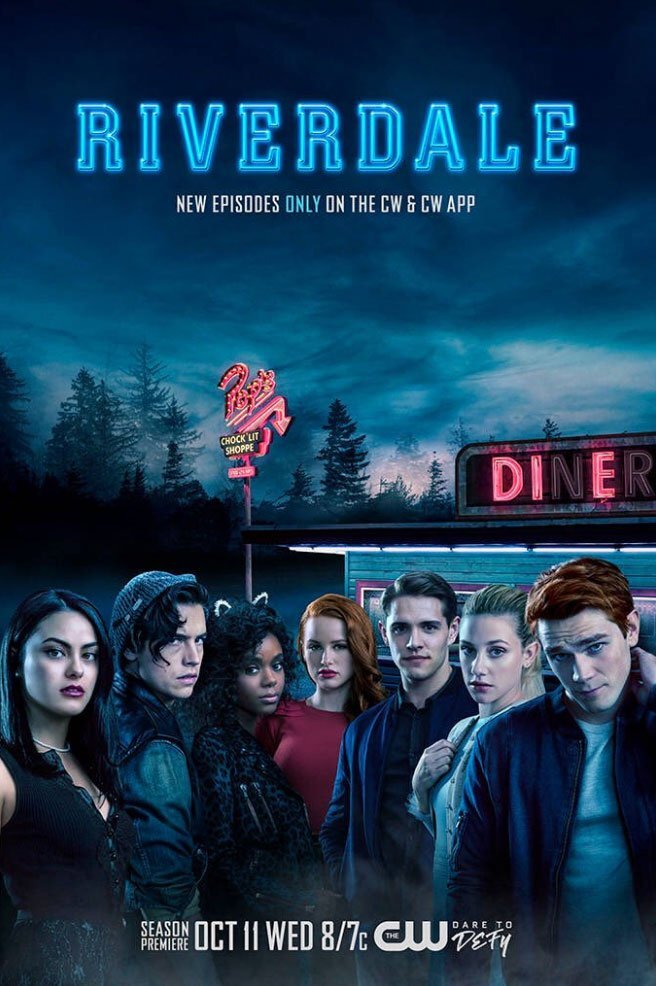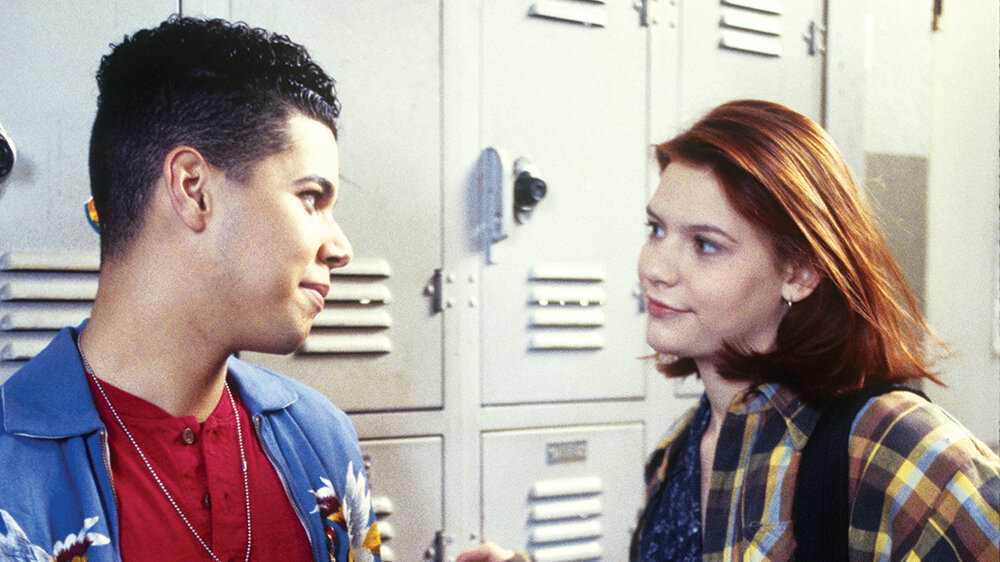Watching Teen TV: An Interview with Stefania Marghitu (Part Two)
/How have shifts in delivery channels from broadcast networks to cable channels to streaming platforms reshape the genre? You describe Euphoria as a premium cable network series so perhaps it would be a good example to spell out some of your assumptions here.
I think in terms of teaching, and as this book is geared towards teaching introductory students to television, media and cultural studies, it’s important to distinguish both how historical and contemporary platforms function. One thing that has been lost amidst streaming’s prevalence is confusion with streaming “originals.” And by distinguishing the production, distribution, and reception of platforms but also by historical eras at the interaction of social movements, we can also teach students about cyclical patterns and distinguish what is actually “new.”
The interviews and inclusion of race and media scholars within the book shows how different eras allowed for more inclusion, and how droughts occurred. Linking to market demands and assumptions about demographics, as well as socio-political shifts, are key. Students get very excited about representation and visibility, and I want to acknowledge that, but also encourage them to demand more and be discerning in the same way they are towards politics and policy. Kristen Warner, Racquel Gates, Brandy Monk-Payton and Alfred Martin are scholars doing amazing work on these dynamics. Warner’s work on plastic representation has been a tremendous resource for students to understand.
You cite Hardy Boys, Nancy Drew, and Archie as key early influences on teen television for the baby boom generation. How and where was this influence felt? It might be interesting to compare the early formulations of these characters with whats happened as all three franchises have been back in production in the past few years.
The recombinant culture and nature of remakes, reboots and spin-offs is an opportunity both for repeated stagnant formulas as well as room for innovation and updates to beloved past examples. Literary adaptations are constant, and the serialized nature of television lends itself to how novels were first released as well. These series also both allow that prime time hybrid serial that Michal Z. Newman discusses in his work.
The core of these franchises have both a universal appeal and a malleability and flexibility to update and expand. Different eras come back in different futures- it’s most evident in fashion trends and perhaps most apparent in the aesthetics of a media text. Fashion like music and slang is integral to the teen lifestyle identities- Riverdale has this ‘50s look with the darker edge of crime series under Jughead’s narrative of a post-industrial American utopia gone dystopic. It also shows how audiences are split between fans of the genre in general and demographic targets. Fandom and nostalgia pushes audiences one way, and we can have tendencies to either be more lenient or more critical of a beloved media text being newly revamped and released. We tend to think of these as either the tent pole franchises or the cult fandoms, perhaps the “fanboy” at the heart of it too.
As your book makes clear, the television and music industries are complexly intertwined where the teen market is concerned. Does music television represent an alternative genre to teen television in terms of attracting the youth market? You could have a successful music program which did not directly depict the lives of young people, for example?
Absolutely. Music programming or music related content is by no means limited to age. I do think a strong sense of a teen series identity is rooted in music, fashion, and language.
It’s hard for me to imagine a successful teen series without a full sense of self- and part of that to me is the inclusion of fashion and costume design, music supervision and soundtrack , casting and acting, production design, in addition to all the traditional above the line markers. This also allows ways to look at how authorship and influence is being shown by those traditionally below the line folks in the industry, but also how you can’t really not include those integral aspects of teen media. There’s a special relationship between how identity and self expression are defined through fashion, slang, and music. The first piece I published on teen media pinpointed how Clueless is still revered by fans through these key elements, and how its influence is still seen. A strong sense of music, fashion, and vernacular sets the tone for so many of these teen series. You can’t think of My So Called Life without thinking of grunge, or The O.C. without indie rock
Your interviews with production personnel consistently point to the “mandates’ that shaped their production choices. What were some of the mandates these producers felt they needed to achieve if they were going to gain the respect and interest of a teen audience?
While my core was in US media, what is nice about including dominant or influential non-US distribution was a way to discuss the differences between public service and commercial models, then into different modes of production, distribution and reception. With Linda Schulyer and Degrassi, the decades long history of the series reveals how her and her colleagues model is essentially the answer to a lot of issues US television comes short in terms of diversity and inclusion both on and offscreen. First of all, that a middle school teacher like Schulyer could enter the media industry, and slowly develop her own series. As a teacher, she saw that educational media geared towards young people talked down to them, giving into moral panics. It’s like the abstinence only model of sex eduction. Those are the areas where teenage pregnancy is highest. Beyond the Canadian mandate, Schulyer gained freedom, and a franchise, once the show provided US audiences what it was missing. Schulyer also hired and enlisted writers, consultants, etc. to speak on topics relevant to teens who could offer expertise.
Winnie Holzman was in broadcast television during this time that I think helps students understand periods of time where high ratings were crucial for a series, and critical acclaim and awards could not save My So Called Life from cancellation. Again it’s important to have that context when teaching television, and another reason why I find Teen TV the perfect lens for the complexities of the ecosystem.
Eric Damon was the costume designer for Gossip Girl, a show which really brought high fashion to the small screen after its initial success. The star status of Blake Lively after season one and appeal from adults, especially New Yorkers and a rising blog culture and TV recaps and reviews online, all helped boost the show’s fashion credo. And it was the same with his experience on Sex and the City, who made a multi million dollar franchise of its fashion tie ins and product placements. Comparing the relatively low budget of the original Gossip Girl to the new HBO Max iteration that has just premiered also shows how the fandom and legacy of its fashion influence is absolutely integral to the series’ identity.
East Los High shows how early streaming models allowed this series originally funded by a non profit, with no links to the industry, to exist and thrive. It’s an anomaly to the nature of US television, but those are the interesting moments when the innovation can outweigh the convention. And the work given into the show, on par with the thoughtfulness of Degrassi, is really admirable. I think it’s what a lot of my students write about wishing they had when they were younger- we need more than PBS and Sesame Street and a few other examples. But we can’t seem to get this country to agree for universal health care, much less to further provide services to media when budgets are being slashed for what little there is.
Stefania Marghitu holds her PhD from the University of Southern California’s Division of Cinema and Media Studies, with a minor from The Annenberg School of Communication and Journalism. Her book, Teen Television (Routledge Genre Guidebook series), was released in May 2021. You can also find her work published in journals such as Feminist Media Studies, Communication, Culture, and Critique, and Spectator, as well as the edited collections White Supremacy and the American Media (Routledge, forthcoming, 2021) and ReFocus on Amy Heckerling (Edinburgh University Press).
She is currently a Visiting Assistant Professor at Loyola University New Orleans, where she teaches courses on digital media, film, gender, race, and adaptation. She has previously taught introductory and upper level courses on film, television, and digital media history, aesthetics, industry, and theory at Pitzer College, Chapman University, California State University Northridge, and Columbia College Hollywood.





